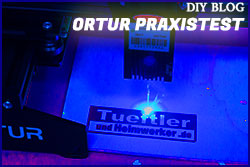Hast du im Kurs den selben Arduino benutzt wie zuhause? Mir ist keine solche Abschaltung bei zuviel Strom bekannt, sicher nicht nur ein schlechter Kontakt? Hast du das Programm im Kurs schon raufgespielt oder erst zuhause eingetippt?
Hast du den Servo bei diesem späteren Test nur an eine Quelle angeschlossen, oder auch an den Mikrocontroller, ohne Steuersignal wird er sich nämlich nicht bewegen. Da das nicht allzu groß sein wird, solltest auch ruhig das Programm posten. Und die Schaltung. Man kann hier sonst wirklich nur ins Blaue raten.







 Zitieren
Zitieren

Lesezeichen